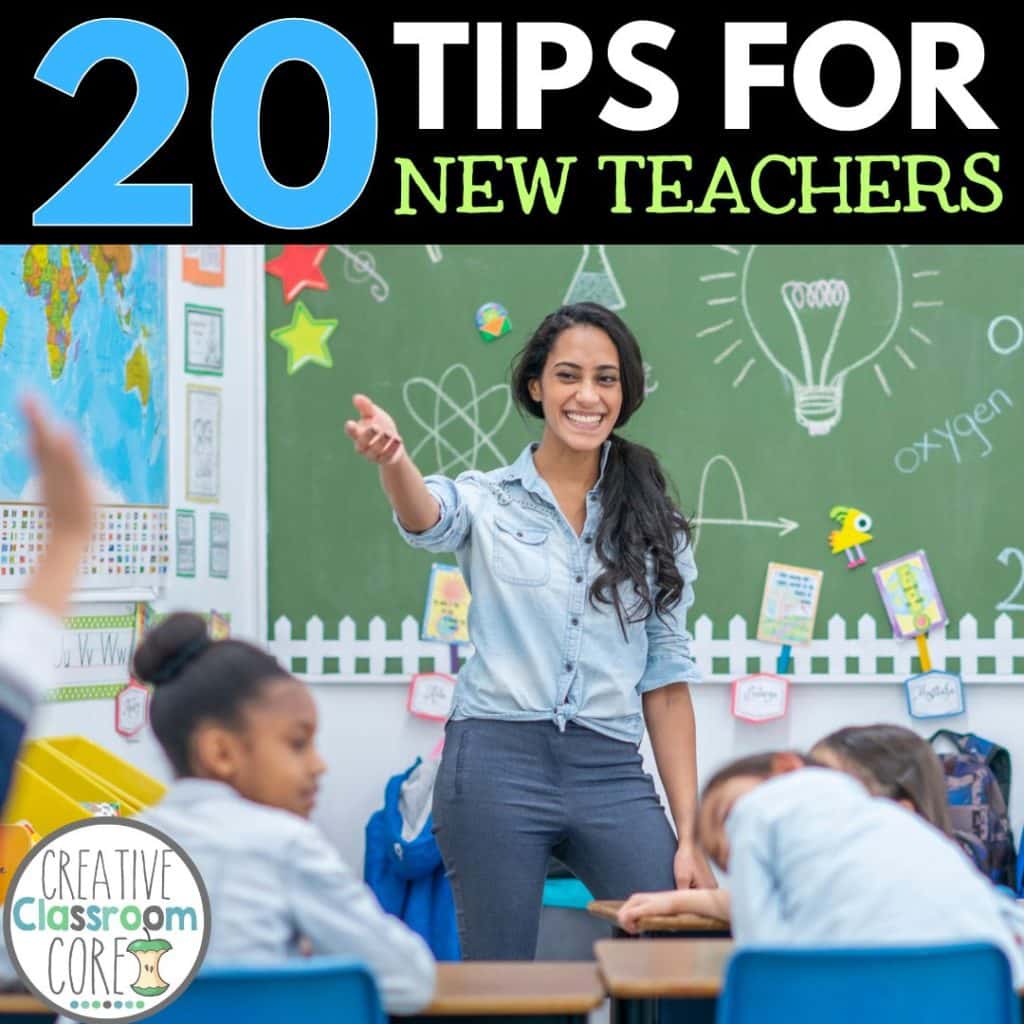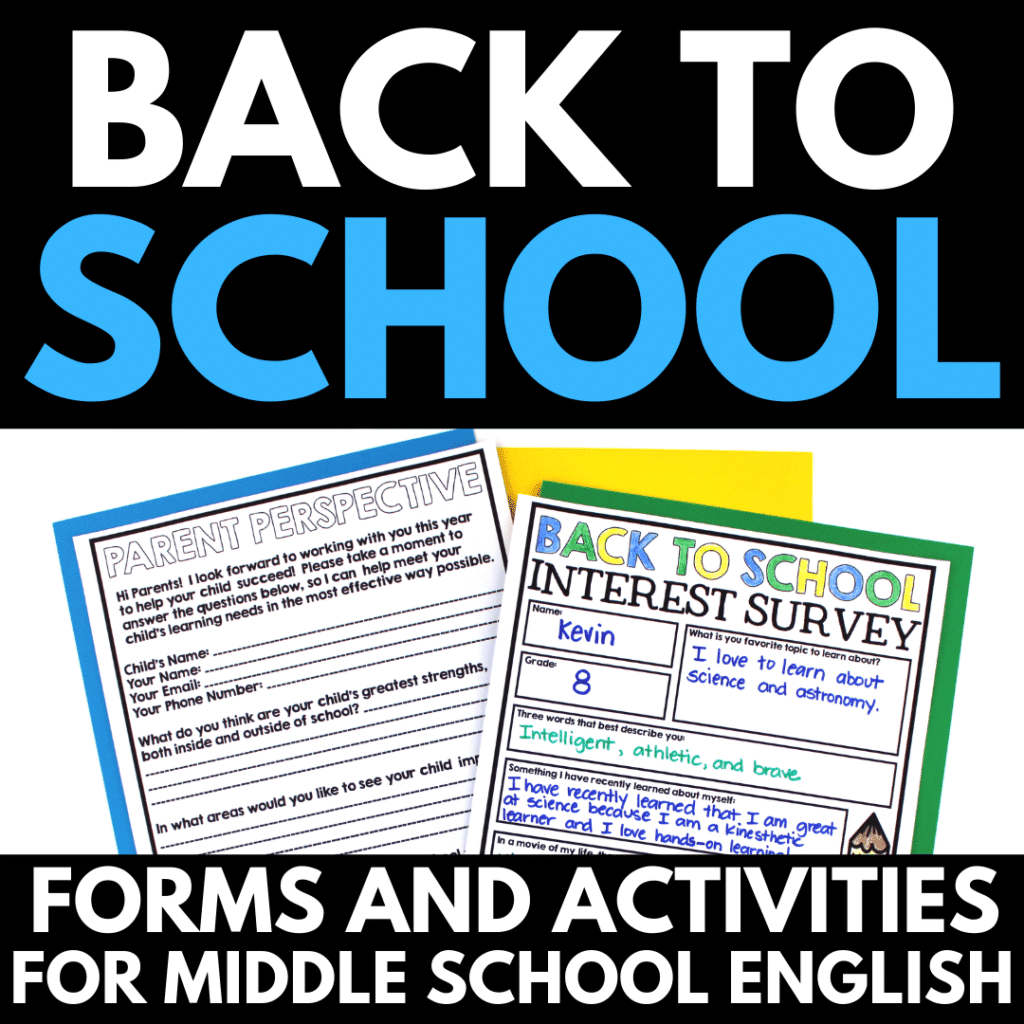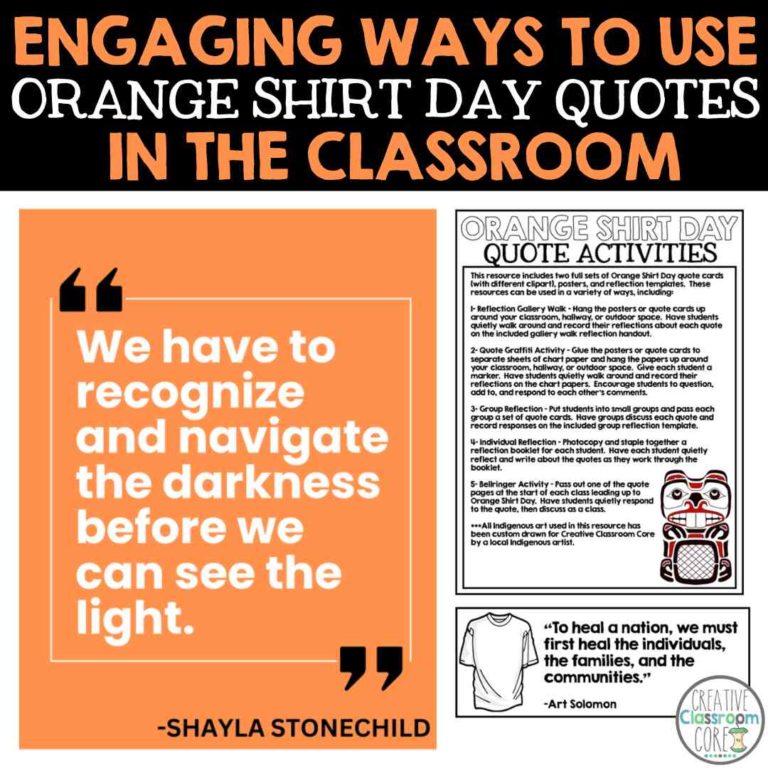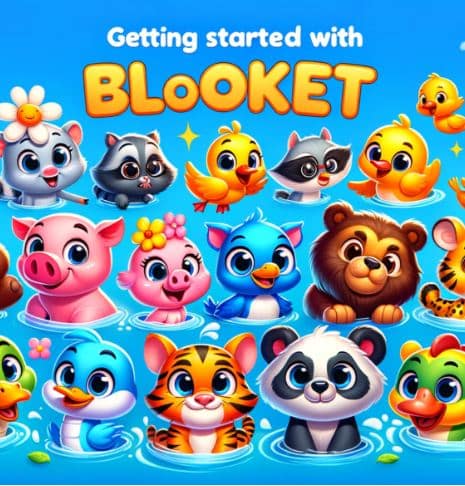Tips for New Teachers
By MARISSA DESPINS Updated Feb 18, 2024
20 Effective tips for new teachers
This post is for all of the new teachers entering the profession this school year. Welcome to the exciting world of teaching! As you embark on your journey as a new teacher, you may experience a mix of excitement and apprehension. The responsibilities and expectations can feel overwhelming initially for sure. In this post I have curated a collection of 20 valuable tips for new teachers which will help you navigate the challenges that lie ahead.
Want to save time planning and grab some print and go resources you can use in your new classroom? Click on the image or button below to visit my TPT shop!
Our main objective as teachers is to create a positive and engaging learning environment that empowers students and ensures a successful school year. Implementing effective strategies and adopting the right mindset are key to accomplishing this goal.
These tips for new teachers cover a range of areas, from establishing a classroom culture that thrives on positivity to utilizing techniques that reinforce positive behavior. Additionally, these tips for new teachers emphasize the importance of fostering a genuine love of learning among your students. These tips for new teachers will assist you in developing the necessary skills and confidence to thrive as a new teacher.
20 tips for new teachers
Check out all 20 tips for new teachers below!
1- Embrace Differentiated Instruction
In any classroom, you’ll encounter students at various academic levels—some still catching up, while others have already mastered the grade-level standards. While this may initially seem challenging, implementing differentiated instruction allows you to tailor lessons to meet each student’s unique academic needs, interests, and learning styles. This approach not only fosters individual growth but also enhances overall student development.
2- Foster collaborative connections
Engaging with fellow educators is a vital aspect of your journey as a teacher, offering a wealth of invaluable opportunities that can positively impact your teaching career. When you actively connect and collaborate with other teachers, you open doors to a wealth of knowledge and insights into effective teaching practices. By engaging in meaningful discussions, sharing experiences, and exchanging ideas, you can gain a deeper understanding of various teaching methodologies and approaches that have proven successful in the classroom.
One of the significant benefits of engaging with fellow educators is the opportunity to collaborate on lesson planning. Working together with colleagues allows you to pool resources, brainstorm creative ideas, and develop innovative lesson plans that engage and inspire your students. Through this collaborative process, you can tap into the collective expertise and experiences of your peers, leading to more engaging and effective lessons. Collaborative lesson planning also promotes a sense of camaraderie among teachers and fosters a supportive and collaborative culture within your school community.

Another important aspect of engaging with fellow educators is the ability to seek support when needed. Teaching can be a challenging profession, and having a network of supportive colleagues can make a world of difference. When you encounter difficulties or face obstacles in the classroom, reaching out to fellow educators who have been through similar situations can provide guidance, advice, and reassurance. Many veteran educators are more than happy to share their tips for new teachers, and can be incredibly helpful when you are feeling overwhelmed. Whether it’s seeking suggestions for classroom management strategies, discussing effective ways to differentiate instruction, or simply finding someone to listen and empathize, the support of your peers and tips for new teachers that they can provide can be invaluable in navigating the ups and downs of teaching.
3- Work towards creating a positive Classroom Culture
When it comes to tips for new teachers, this may be the most important. Creating a welcoming and supportive learning environment is crucial in education. By teaching values such as active listening, respect, and empathy, teachers can foster open communication and encourage students to share their thoughts and needs comfortably. Active listening promotes engagement and understanding, while respect creates a safe space for students to express themselves without judgment. Furthermore, cultivating empathy helps students develop compassion and build meaningful connections with their peers. These foundational principles establish a positive classroom culture where students feel heard, respected, and understood, enhancing their overall educational experience.
For more tips and tricks for building a positive classroom culture, check out our guide to boosting engagement in upper elementary!
3- Develop connections with students
Dedicate yourself to gaining a deep understanding of your students. Take the initiative to uncover their distinct interests, strengths, and specific needs. Armed with this knowledge, you will be able to personalize your instruction and activities to cater to their preferred learning styles, leading to increased engagement and academic success.
By investing time and effort into understanding your students on an individual level, you gain valuable insights into what motivates and resonates with them. Discovering their unique interests allows you to incorporate relevant and meaningful content into your lessons, making the learning experience more enjoyable and relatable for them. Additionally, identifying their strengths enables you to provide opportunities for them to showcase their talents and build confidence in their abilities.
Moreover, recognizing the individual needs of your students allows you to address any learning challenges or gaps more effectively. By tailoring your instruction to their preferred learning styles, whether they are visual, auditory, or kinesthetic learners, you can optimize their comprehension and retention of the material. This personalized approach promotes a sense of ownership and investment in their own learning, fostering a positive and supportive classroom environment.
4- Plan ahead for effective lessons
Structure and routine are essential for student success. By planning your lessons in advance, you can ensure consistency, maintain organization, and design engaging activities that cater to the diverse needs of your students. This approach will enhance the learning experience and provide a well-rounded education.
Need help with lesson planning? Be sure to check out the resources posted in my shop! I pride myself in creating resources that require minimal prep, making your planning time so much easier!
5- Harness The Power Of Positive Reinforcement
Elementary students thrive on positive reinforcement. By acknowledging their efforts and achievements, you boost their confidence and foster a culture of continued success. Implement strategies like praise, rewards, or other forms of positive reinforcement to motivate students to do their best. This approach not only contributes to a positive classroom culture but also cultivates a love for learning.

6- Practice Patience
Teaching is a remarkable journey of both gratifying moments and formidable challenges. It is crucial to cultivate patience as you navigate the learning curve and gain experience, allowing yourself time to grow and refine your skills. Along the way, gentle prompts serve as important reminders, helping you maintain a balanced mindset and embrace the joys and complexities of teaching. Remember to practice self-compassion, celebrating your successes and learning from setbacks, as you continue to make a positive impact on the lives of your students.
7- Foster a strong home-school connection
Regular and effective communication with parents is crucial. Keep them informed about classroom activities, events, and their child’s progress. Encourage a collaborative partnership that supports student success, and be open to their feedback and insights. Building a positive home-school connection strengthens the educational experience and ensures a holistic approach to student growth.
Looking for some resources to help foster the school-classroom relationship? Check out the parent communication forms included with this resource!
8- Be mindful of technology
Technology can be a valuable tool for enhancing learning and engagement. However, it’s important to use it thoughtfully and purposefully. Select technology tools and resources that align with your learning objectives, ensuring they are safe, age-appropriate, and effective. By integrating technology wisely, you create an enriched educational experience for your students while maintaining a balanced approach to their digital well-being.
Looking for some resources that students can complete online? Check these out in my shop!
9- Embrace feedback for growth
As a new teacher, it’s natural to question and seek improvement in your teaching practices. The desire to constantly do your best is common among educators. Actively seeking feedback from colleagues, administrators, and even students can provide valuable insights into areas of improvement and opportunities for growth. Embrace feedback as a valuable tool for refining your teaching methods and enhancing the learning experience for your students. Remember, the path to becoming an exceptional teacher involves a willingness to learn and adapt based on the feedback received.
10- foster a growth mindset
Encouraging a growth mindset not only applies to your students but also to yourself. By embracing a growth mindset, you demonstrate to your students that mistakes and challenges are valuable learning opportunities. Create an environment where students feel comfortable taking risks, making mistakes, and learning from their failures. Modeling a growth mindset sets the foundation for a resilient and adaptable learning community.
Looking for a FREE resource to teach all about Growth Mindset? Click on the link or button below to grab a copy of this FREE Growth Mindset unit – complete with graphic organizers, reading passages, and creative activities!
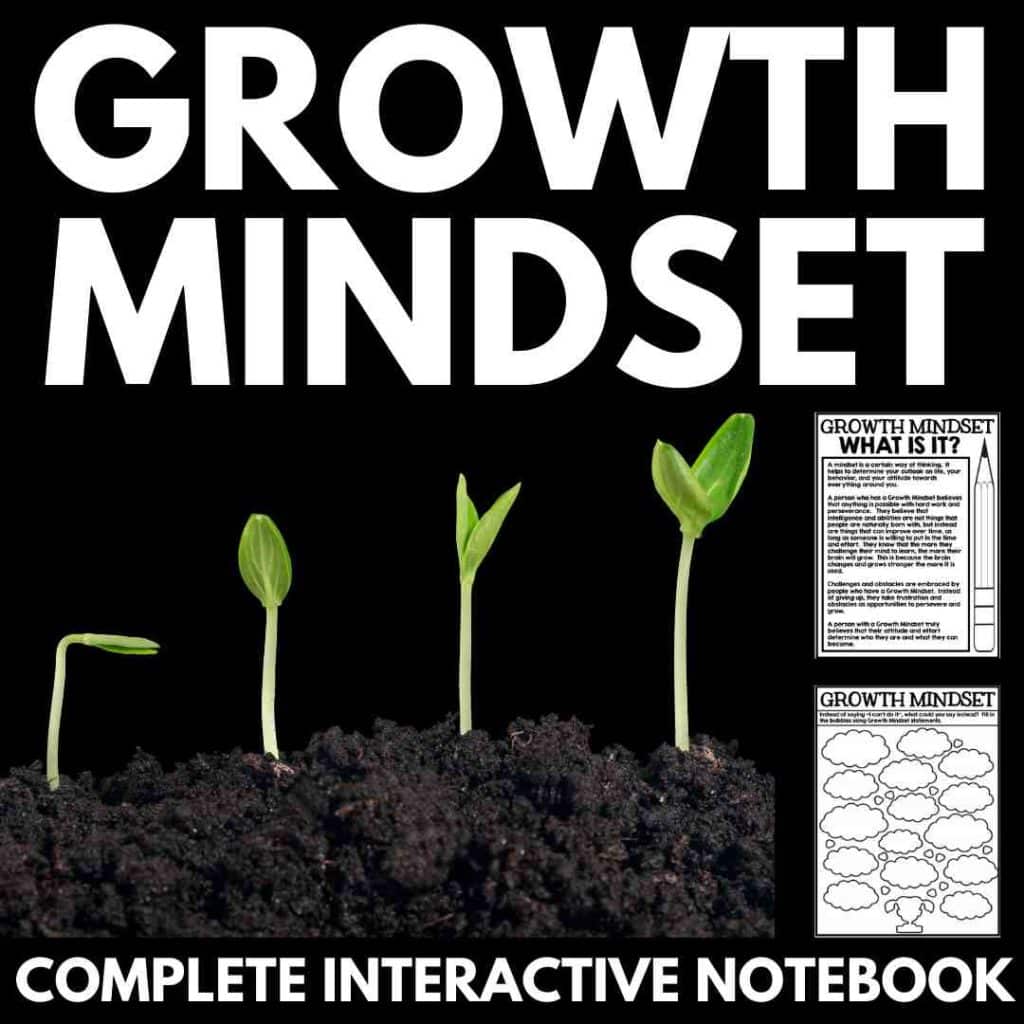
Interested in more information on growth mindset? Check out our posts on fostering a growth mindset in middle school classrooms, 5 creative ways for encouraging a growth mindset, and engaging picture books about growth mindset!
11- Commit to lifelong learning
While many schools offer professional development opportunities, it is essential to actively seek ongoing learning and development to enhance your teaching skills and expertise. Engaging in professional development, such as attending conferences, workshops, and online courses, goes beyond the tips mentioned in this post. It allows you to stay updated on current research, best practices, and educational trends. Continual professional growth ensures that you are equipped with the latest knowledge and strategies to provide the best education for your students.
On the hunt for some great Pro-D books to further your learning? Check out our list of awesome summer teacher reads and our favorite professional development books for launching writer’s workshop!
12- Utilize assessment and data-informed instruction
Assessment doesn’t have to be limited to summative evaluations. Regular assessments, even through observation, provide valuable insights into your students’ progress and guide your teaching. Remember, assessment doesn’t always have to take the form of tests. It can be as simple as implementing exit ticket ideas or using other creative assessment methods. Gathering information from various sources, including observations and assessments, empowers you to tailor your instruction and adapt your teaching strategies to meet the unique needs of your students.
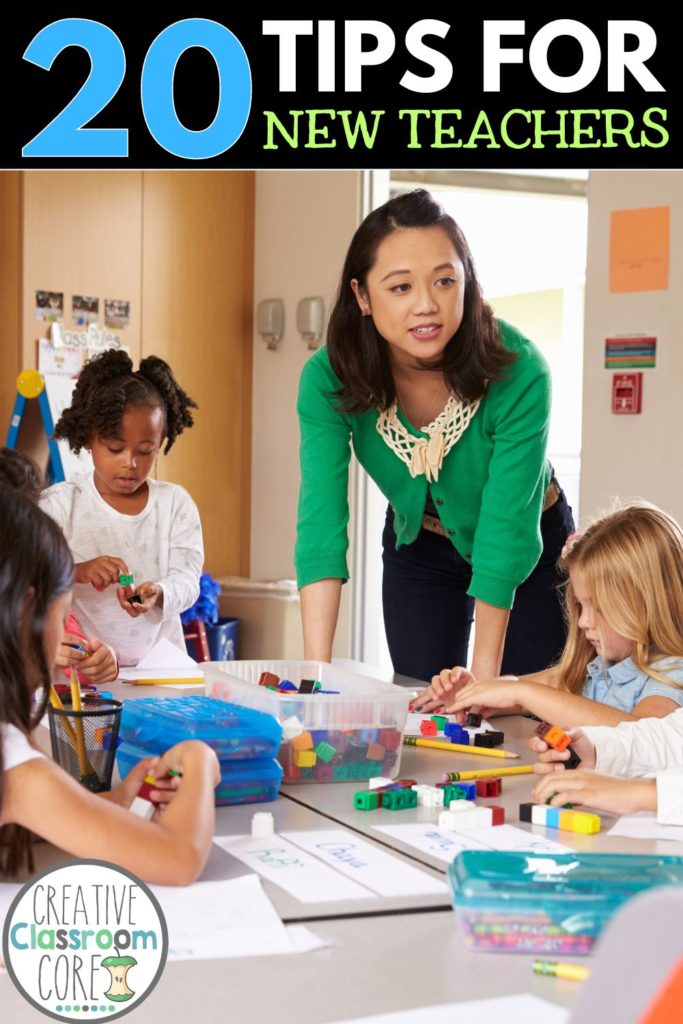
For more assessment tips, check out our post on assessment selection!
13- Integrate hands-on and experiential Learning
Research supports the effectiveness of hands-on and experiential learning approaches. Plan activities that enable students to engage in concrete experiences, explore, create, and discover on their own. By providing opportunities for active learning, you lay the foundation for meaningful learning experiences and scaffold their knowledge-building journey.
I love using interactive notebooks with my learners to seriously up the hands-on learning fun. Grab a free resource to help incorporate interactive notebooks into your classroom by clicking on the image or button below.
For more tips and tricks for using interactive notebooks, you won’t want to miss our complete guide!
Looking for additional hands-on learning activities? Check out our posts all about using STEM challenges in the classroom! We share information on STEM challenges for Halloween, Thanksgiving, and Christmas!
14- Embrace a variety of instructional strategies
As an experienced teacher, you understand the importance of employing diverse instructional strategies. Mixing things up in the classroom not only engages students but also motivates them to take an active role in their learning. Embrace this passion by incorporating a range of instructional methods, ensuring that students have opportunities to learn through various modalities and develop a deeper understanding of the content.
15- Select high-quality Resources
While there are numerous free resources available online, it’s important to be discerning in your selection. Initially, it may be tempting to gather any resource you come across. Instead, focus on seeking out resources that challenge your students’ thinking, delve deeply into concepts, and align with your curriculum and standards. Look for resources that go beyond mere practice or review worksheets, providing meaningful and engaging learning experiences. When you find high-quality resources, you’ll discover their value year after year, allowing for efficient and effective teaching.
16- Remember that it isn’t only about grades
Solely Focusing on Grades: While grades hold significance, it’s important to shift our focus towards emphasizing student growth and progress. Recognize that even small improvements represent significant leaps in learning. Rather than solely fixating on final grades, prioritize celebrating the growth and development students achieve throughout their educational journey.
17- Cultivate an inclusive and equitable classroom
Create a learning environment that embraces diversity and ensures equity for all students. Implement strategies of culturally responsive teaching to foster inclusivity and respect for the unique backgrounds, experiences, and perspectives of your students. Celebrate the richness of diversity within your classroom and promote an atmosphere where every student feels valued and supported.
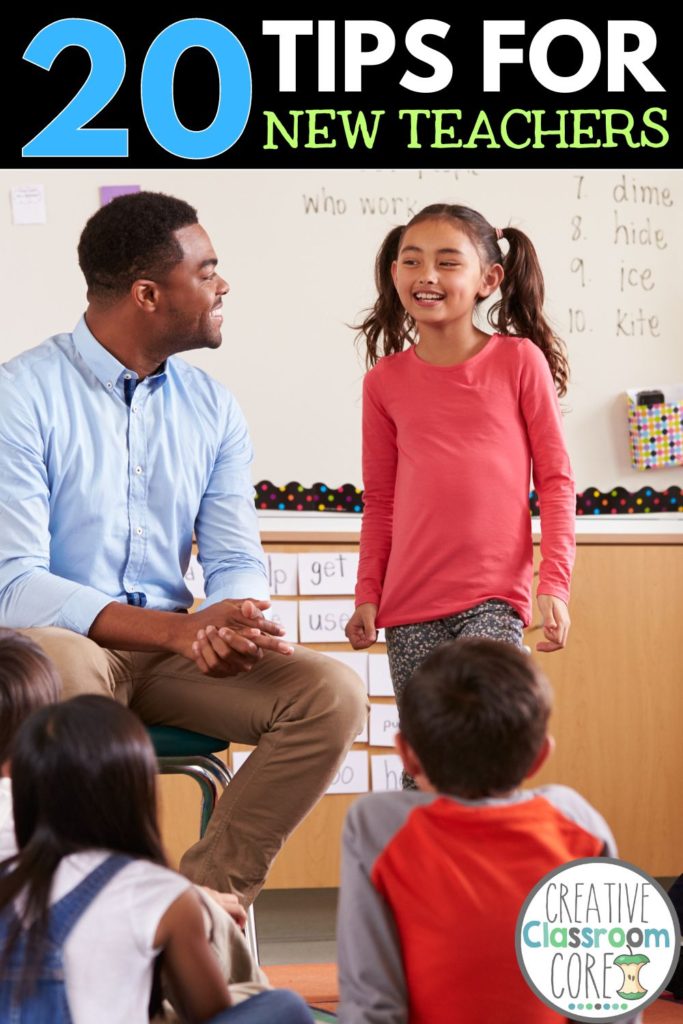
18- Encourage student ownership of learning
In the face of prevalent student apathy, it becomes essential to empower students to take ownership of their learning. Encourage them to set goals, monitor their progress, and reflect on their achievements. Provide opportunities for student choice and collaboration, allowing them to feel more engaged and invested in their own learning process. By nurturing a sense of ownership, students become active participants in shaping their educational journey.
19- Implement an effective classroom management system
No list of tips for new teachers is complete without some information about classroom management. Gone are the days of punitive and embarrassing classroom management systems. Research supports the use of positive behavior management strategies, such as positive reinforcement and restorative justice, for promoting a positive classroom environment. However, each teacher may have their own preferred classroom management style. Explore different strategies and experiment to find the ones that work best for you and your students. Remember, an effective classroom management system sets the stage for a productive and respectful learning environment.
20- Make learning fun
Over time, the misconception has arisen that teaching and fun are mutually exclusive. However, it’s important to debunk this notion. One of the most valuable tips for new teachers is to understand that learning can be both engaging and enjoyable. You have the freedom to create lesson plans that incorporate elements of fun! Make use of games, puzzles, and other interactive activities that foster an enjoyable and memorable learning experience. Remember, learning should be a source of excitement and discovery, particularly for elementary students.
While all of these tips for new teachers are important, when it all comes down to it, simply do your best. Recognize that making mistakes is a part of the learning process. As your first year progresses, you’ll discover your unique teaching style and what works best for you. Each subsequent year will become easier, and you’ll find fulfillment in the impact you make on the lives of your students every day.
Looking for some back to school activities to help start the year off right?
Check out my previous blog posts below! They are full of teaching ideas and tips for new teachers like you!
Back to School Resource Roundup
Mandala Art Projects for Back to School
Do Unto Otters – The Perfect Back to School Read Aloud
Interested in signing up for my email list?
If you are interested in signing up for my email list, you can do so by clicking on the link below. I periodically send out emails with free resources, teaching tips, and exclusive deals. Signing up will also give you immediate access to some of my best selling Interactive Notebook resources – foldable projects, graphic organizers, and other fun activities.
